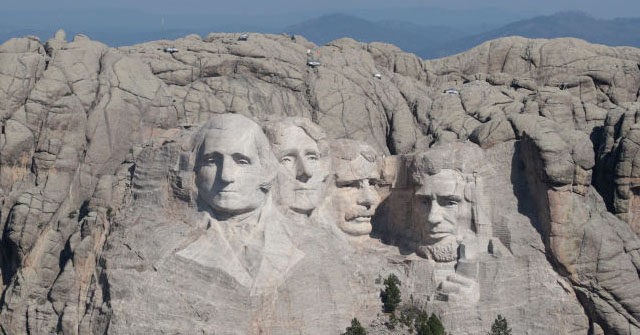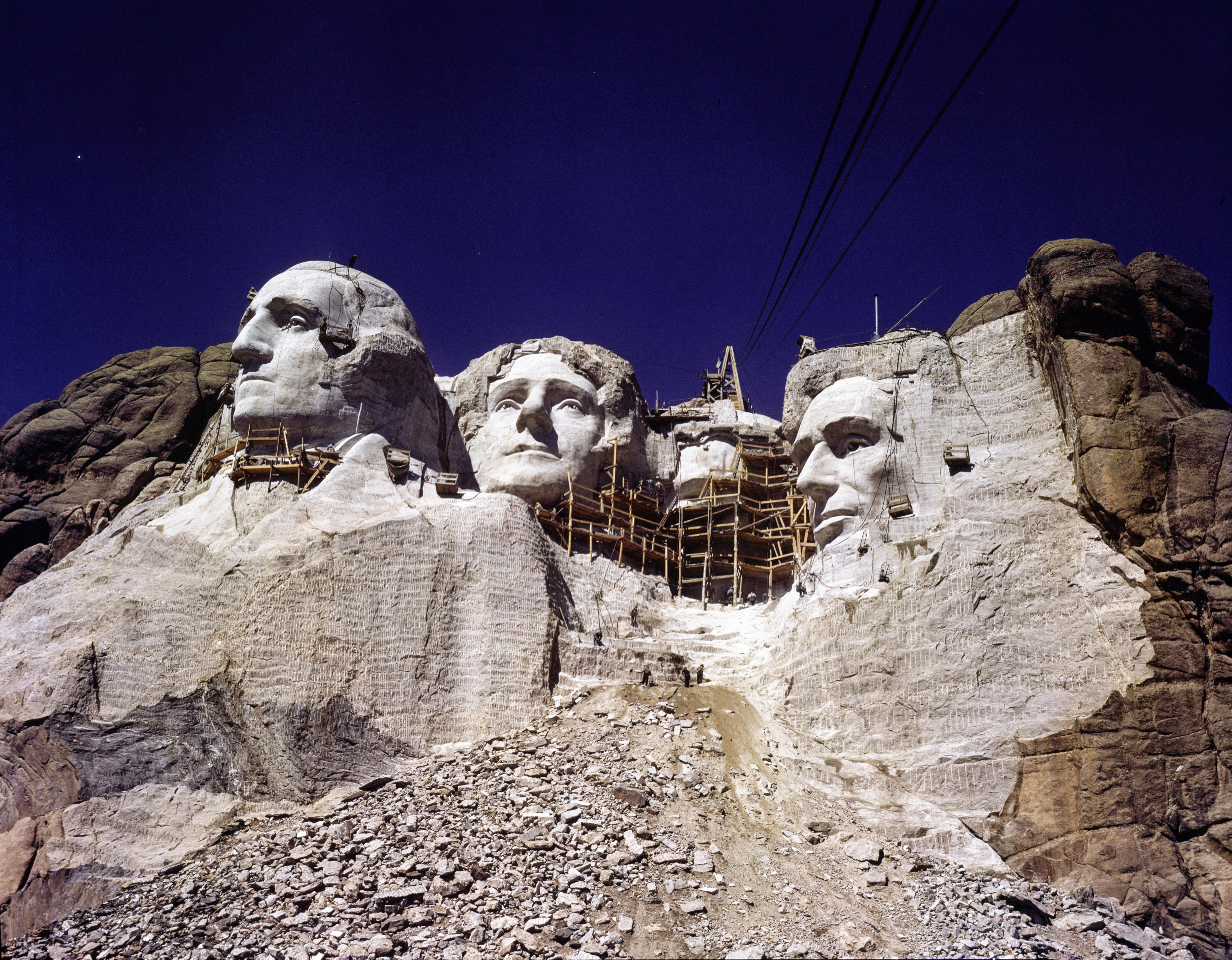Table Of Content

Jefferson’s was dedicated in 1936—with then-president Franklin Roosevelt in attendance—and Lincoln’s was completed a year later. The project, which cost $1 million, was funded primarily by the federal government. According to the National Park Service, the first face to be chiseled was George Washington’s; Borglum first sculpted the head as an egg shape, his features added later. Thomas Jefferson’s image was originally fashioned in the space to the right of Washington, but, within two years, the face was badly cracked. Borglum then started over with Jefferson situated on the left side of Washington. It’s fitting to commemorate the dedication of the National Statuary Hall, which honors America’s greatest heroes while also celebrating the country’s rich history.

Presidents And A Spectacular View: Mount Rushmore National Memorial
Much of the 450,000 tons of rock removed in the process was left in a heap at the base of the memorial. The federal government paid most of the nearly $1 million cost, with much of the remainder coming from private donations. Washington’s head was dedicated in 1930, Jefferson’s in 1936, Lincoln’s in 1937, and Roosevelt’s in 1939.
Present day
He chose the two most famous presidents, George Washington and Abraham Lincoln, and chose Thomas Jefferson because of the 1803 Louisiana Purchase (which included the land that became South Dakota). Borglum's original design was intended to go down to their waists, but time constraints and funding only provided for their heads. Borglum had used a massive projector at night to cast his image of Confederate leaders onto Stone Mountain; his assistant traced the shape with white paint. But at Mount Rushmore, Borglum mounted a flat-panel protractor on each of the presidents’ heads with a large boom and a plumb bomb dangling from the boom. “His crew took thousands of measurements on the model and then went up to the mountain and translated it times 12 to recreate those measurements on the mountain,” says Bracewell. In red paint, they marked off certain facial features, what needed to be carved and how deep.
This Day in History Video: What Happened on October 4
But Borglum soon began to clash with the Stone Mountain Memorial Association. But Doane Robinson, a historian at the South Dakota State Historical Society, believed the state needed more to entice tourists. In 1924, learning about an attempt to carve the likenesses of Confederate leaders into the side of Stone Mountain in Georgia, Robinson launched a campaign to create South Dakota’s own mountain men.
Wrapped in its own controversy, the construction of the Crazy Horse Memorial, which eclipses Mount Rushmore in size, continues to this day. The memorial has refused government grants and is funded by visitors and private donors. Thomas Jefferson was meant to be to the left of George Washington, but when the crew started carving there, they realized the rock on that side was not well suited.
Despite this, the memorial has become a popular tourist destination, with thousands of visitors posing for photographs with Black Elk’s statue each day. There is no doubt that the Lakota people were not always overjoyed with the Black Elk Memorial. At the end, the memorial, in addition to being a popular tourist destination, pays homage to the great Lakota leader and honors his legacy. The construction of Mount Rushmore National Memorial began on October 4, 1927, and took 14 years to complete. The sculptor of the memorial was Gutzon Borglum, the son of Danish immigrants.
Hall of Records
When Rushmore asked a local man the name of a nearby mountain, he reportedly replied that it never had a name before, but from now on would be known as Rushmore Peak (later Rushmore Mountain or Mount Rushmore). The South Dakota landmark has drawn criticism over the land it occupies, the main sculptor behind it and the legacies of the men it memorializes. The path which led Sculptor John Gutzon de la Mothe Borglum to Mount Rushmore began on a homestead near Bear Lake, Idaho, where he was born in March of 1867. His father, James Borglum, had immigrated to this country from Denmark a few years earlier. In the landmark United States v. Sioux Nation of Indians case, the Supreme Court ruled that the U.S. government had improperly taken the Black Hills territory from the Lakota, who were deemed entitled to $17.1 million in damages. But the Lakota declined the compensation and have since advocated for the return of the Black Hills instead.
By the 1920s, South Dakota, now a U.S. state, had became a road-trip destination for Americans in their new horseless carriages. They motored in to see the newly designated Black Hills National Forest and Wind Cave National Park. Governor Peter Norbeck had also built the Needles Highway, a scenic route wending through the iconic granite formations of the Black Hills. How they got there is a complex tale of land grabs, egos, and foiled movie scenes. Consequently, on July 4, 1776, our forefathers promulgated a principle never before successfully asserted, that life, liberty, equality, and pursuit of happiness were the birthrights of all mankind.
Park footer
In the eight decades since the carving was completed, it has never been without controversy. Borglum was still refining those heads when his health began to deteriorate. He died on March 6, 1941, leaving his son, Lincoln, to continue his work. But the mountain had a limited amount of carvable surface—for example, Jefferson’s hand couldn’t be completed due to the quality of the stone—and, worse, funding had run out.

He began to experiment with the "emotional impact of volume." Out of a large block of marble, he fashioned a colossal head of Abraham Lincoln, The work was completed and taken to a shop window in New York. Back in this country, Borglum led a life marked by artistic success, public service, and occasional controversy. His Mares of Diomedes was accepted by the Metropolitan Museum of Art in New York City. He did a large equestrian bronze of General Phil Sheridan which Theodore Roosevelt unveiled in Washington. He also created a memorial to Pickett's Charge on the Gettysburg Battlefield. For Newark, New Jersey, he created the Wars of America memorial and the Seated Lincoln.
But the discovery of gold in the region soon led U.S. prospectors to flock there en masse, and the U.S. government began forcing the Sioux to relinquish their claims on the Black Hills. Because of World War I, work at Stone Mountain did not begin until 1923. Carving was limited to jackhammers and chisels until a visiting Belgian engineer taught Borglum the use of dynamite for precise work. Soldiers in the audience who served with the Confederate leader were moved to tears by the likeness. It’s unlikely that any major changes will be made to this nearly 80-year-old memorial. While some have pushed for Mount Rushmore to be expanded, others have demanded that it to be torn down.

No comments:
Post a Comment